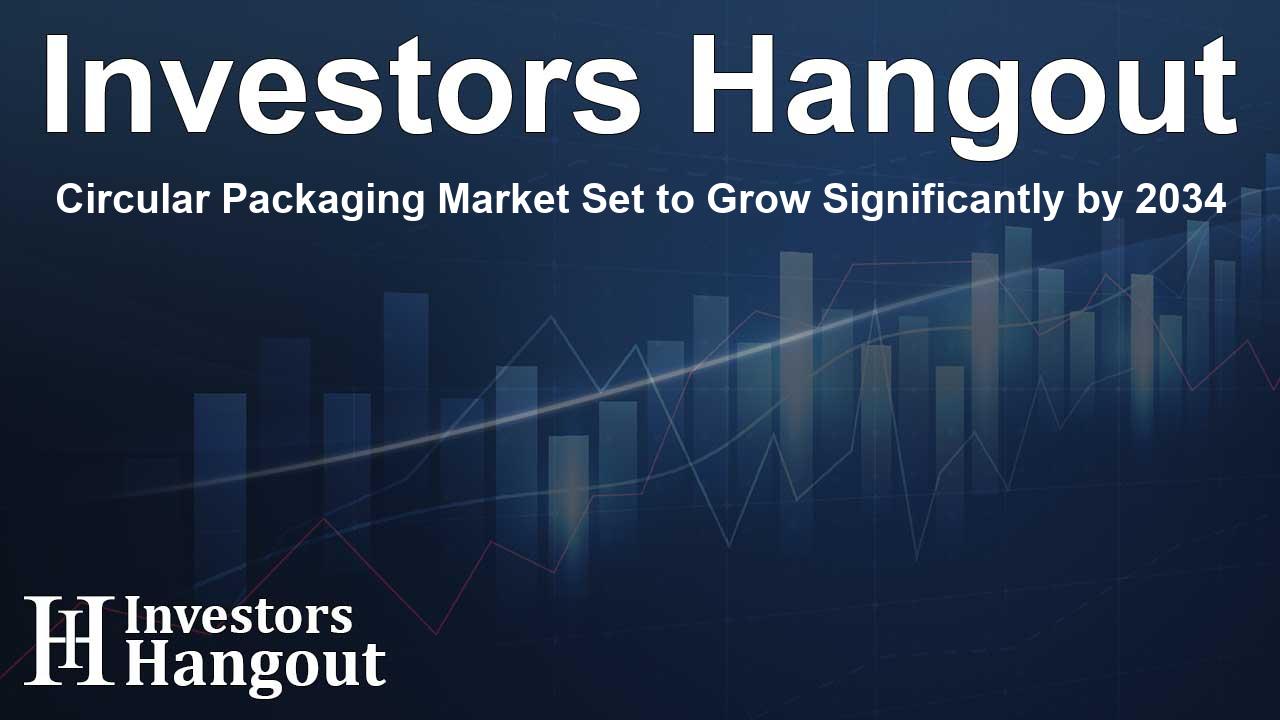Circular Packaging Market Set to Grow Significantly by 2034

Overview of Circular Packaging Market Growth
The circular packaging market is on an exciting trajectory, with an expected growth from USD 266.25 billion currently to a remarkable USD 469.28 billion in the coming years. This surge is largely fueled by a rising awareness of environmental issues and stricter regulations aimed at promoting sustainability. As consumers and companies alike adopt more eco-conscious behaviors, the demand for innovative and sustainable packaging solutions is rapidly increasing.
Understanding Circular Packaging
Circular packaging represents a shift from traditional linear models that often prioritize convenience and cost over environmental impact. Instead, it is designed to minimize waste by maintaining materials in circulation through systems of reuse, recycling, and regeneration. This approach emphasizes not just the products we create but also how we manage their lifecycle from inception to disposal. By focusing on renewable, recyclable, or compostable materials, businesses can contribute to a healthier planet.
Key Drivers of Growth
The growing demand for sustainable packaging solutions has been driven by several factors. Heightened environmental awareness among consumers has shifted priorities towards eco-friendly products, prompting companies in sectors like food and beverages, personal care, and e-commerce to adopt circular packaging to align with these expectations. This transition is not merely a trend, but a necessary adaptation to changing consumer preferences.
Technological Innovations
Advancements in technology have unlocked a realm of possibilities for circular packaging. Innovations such as biodegradable materials and reusable packaging systems are now being integrated into production lines. Additionally, collaborations among manufacturers, policymakers, and consumers are crucial in promoting a circular economy, driving the need for sustainable packaging solutions further.
Emerging Trends in Circular Packaging
Regulatory Influences
The market is actively shaped by shifting regulatory environments that encourage a move towards circular business models. Legislative efforts aimed at reducing packaging waste are pushing companies to consider the end-of-life impact of their products. Initiatives like Extended Producer Responsibility (EPR) compel brands to take accountability for packaging disposal, fostering significant changes in business practices.
Material Innovations
Another notable trend is the introduction of innovative materials, including those that are bio-based, compostable, and even edible. Recent developments include packaging derived from natural sources such as agricultural waste and seaweed, which help reduce reliance on traditional plastics.
Challenges in the Market
Despite the positive growth outlook, the circular packaging market faces several challenges. A lack of standardization continues to hinder widespread adoption, making it difficult for companies and consumers to identify truly sustainable packaging options. Additionally, inadequate recycling and waste management infrastructure in certain regions further complicates the transition to a circular model.
Regional Insights
Regions across the globe are experiencing varying degrees of adoption of circular packaging solutions. Europe remains a leader due to its stringent regulatory framework and robust recycling infrastructure. Countries like Germany and France are at the forefront of implementing effective policies that promote recycling and sustainability.
North American Dynamics
In North America, rising consumer demand for sustainable practices is influencing corporate strategies, with many businesses aiming for zero-waste goals and adapting packaging to meet these standards. This shift is supported by local governments that are implementing EPR programs and introducing laws that promote sustainable packaging practices.
Asia-Pacific Potential
The Asia-Pacific region is witnessing a remarkable rise in circular packaging due to growing urbanization and a burgeoning middle class. This demographic shift correlates with an increased demand for packaged goods, especially in e-commerce, which is further driving the push for sustainable packaging formats.
Conclusion: The Future of Packaging is Circular
The circular packaging market is poised for significant growth, operating at the intersection of environmental necessity and consumer expectation. Companies that embrace this shift, like Australian Oilseeds Holdings Limited (NASDAQ: COOT), will not only meet regulatory demands but also enhance their brand image by participating in proactive sustainability practices.
Frequently Asked Questions
What is circular packaging?
Circular packaging refers to a sustainable approach that minimizes waste by extending the lifecycle of materials through reuse, recycling, and regeneration.
Why is circular packaging important?
It addresses environmental concerns by reducing waste, conserving resources, and promoting sustainability in product design and supply chains.
What trends are influencing the circular packaging market?
Driving trends include regulatory pressures, technological advancements in materials, and growing consumer demand for sustainable solutions.
How does technology affect circular packaging?
Technological innovations, like the creation of biodegradable materials and smart packaging systems, enhance the feasibility and efficiency of circular packaging.
What challenges does the circular packaging market face?
Challenges include a lack of standardization, insufficient recycling infrastructure, and the need for consumer education on sustainable practices.
About The Author
Contact Thomas Cooper privately here. Or send an email with ATTN: Thomas Cooper as the subject to contact@investorshangout.com.
About Investors Hangout
Investors Hangout is a leading online stock forum for financial discussion and learning, offering a wide range of free tools and resources. It draws in traders of all levels, who exchange market knowledge, investigate trading tactics, and keep an eye on industry developments in real time. Featuring financial articles, stock message boards, quotes, charts, company profiles, and live news updates. Through cooperative learning and a wealth of informational resources, it helps users from novices creating their first portfolios to experts honing their techniques. Join Investors Hangout today: https://investorshangout.com/
The content of this article is based on factual, publicly available information and does not represent legal, financial, or investment advice. Investors Hangout does not offer financial advice, and the author is not a licensed financial advisor. Consult a qualified advisor before making any financial or investment decisions based on this article. This article should not be considered advice to purchase, sell, or hold any securities or other investments. If any of the material provided here is inaccurate, please contact us for corrections.
